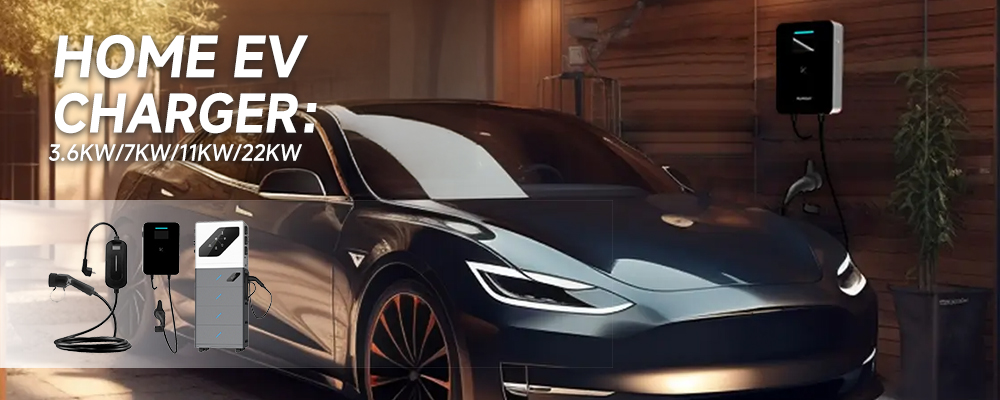Electric vehicles offer a cleaner alternative to traditional cars, but "refueling" them works differently. Instead of gas pumps, EV drivers rely on charging stations. But how do these stations actually deliver power to your vehicle's battery? Understanding the basics of charging levels, power types (AC vs. DC), and how they relate to different types of EV charging stations – whether it's your personal home car charger, a unit at work (commercial charging station), or a rapid charger on the highway (public EV charging station) – is key to navigating the EV world effectively. This article breaks down the technology behind EV charging.
1. Level 1 Charging: The Basic Home Top-Up
Argument: Level 1 charging utilizes a standard 120-volt household outlet, the same kind you use for lamps or laptops. It requires no special installation, using the charging cord often supplied with the EV.
How it Works: It delivers AC (Alternating Current) power directly from the outlet to the EV's onboard charger, which then converts it to DC (Direct Current) to store in the battery.
Performance: This is the slowest method, typically adding only 4-5 miles of range per hour. While slow, it can be sufficient for overnight charging for plug-in hybrids or EVs with smaller batteries, especially if taking advantage of lower off-peak electricity rates [External link placeholder: Link to a local utility's time-of-use rate plan, e.g., CenterPoint Energy or Austin Energy].
2. Level 2 Charging: The Standard for Home and Many Public Locations
Argument: Level 2 is the most common type of charging found in homes and many public/commercial settings. It offers a significant speed increase over Level 1, making it practical for daily use.
How it Works: Level 2 uses a dedicated 240-volt circuit (similar to an electric stove or dryer) to deliver higher AC power to the EV's onboard charger. Professional installation by a licensed electrician is required for the 240V circuit and the charging station itself. Common setups include wall-mounted chargers installed in garages.
Performance: It typically adds 25-30 miles of range per hour (though this varies by vehicle and charger amperage), allowing most EVs to fully charge overnight (4-10 hours). The popular 7kW home charger falls into this category, providing a good balance of speed and electrical requirement for residential settings.
3. Level 3 Charging (DC Fast Charging): Maximum Speed for the Road
Argument: Level 3, or DC Fast Charging (DCFC), provides the quickest charging speeds, designed primarily for rapid refueling during long trips or for drivers needing a fast top-up.
How it Works: Unlike Level 1 and 2, DCFC stations bypass the EV's onboard AC-to-DC converter. They have powerful converters within the station itself that take AC power from the grid, convert it to high-voltage DC power, and deliver it directly to the EV's battery. This direct DC delivery is key to its speed.
Performance: DCFC can add up to 200 miles of range (or reach ~80% battery capacity) in as little as 20-60 minutes, depending on the station's power output (ranging from 50kW to 350kW or more) and the vehicle's capabilities. These are almost exclusively found at public EV charging stations and some commercial EV charging stations due to their high cost and complex power requirements (often 480V+).
4. AC vs. DC Charging: Understanding the Power Flow
Argument: The core difference lies in where the conversion from AC (grid power) to DC (battery power) happens.
AC Charging (Level 1 & Level 2): The charging station supplies AC power to the vehicle. The conversion to DC happens inside the car using its onboard charger. The speed is limited by the power rating of both the station and the car's onboard charger (typically 7kW to 19kW).
DC Charging (Level 3): The charging station performs the AC-to-DC conversion externally with its powerful built-in converters and delivers DC power directly to the battery, bypassing the car's slower onboard charger. This allows for much higher power delivery and faster charging speeds. [External link placeholder: Link to an article or video explaining AC vs DC charging in more detail].
5. How Technology Applies to Home EV Charging Stations
Argument: Home EV charging stations predominantly utilize Level 1 (basic outlet) or Level 2 (dedicated 240V AC) technology. Level 2, often via a wall-mounted charger or a specific 7kW home charger, is the preferred method for most homeowners due to its practical charging speed for overnight use. DC Fast Charging (Level 3) is not feasible for residential installation due to its extreme power requirements and cost.
6. How Technology Applies to Public EV Charging Stations
Argument: Public EV charging stations offer a mix of technologies to serve different needs. You'll find Level 2 AC chargers at destinations where people park for longer periods (shopping centers, parks, hotels) and Level 3 DC Fast Chargers along highways and in urban hubs for rapid refueling during travel. The availability of reliable public charging, especially DCFC, is crucial for enabling long-distance EV travel.
7. How Technology Applies to Commercial Charging Stations
Argument: Commercial charging stations (at workplaces, retail locations, fleet depots, multi-unit dwellings) strategically deploy different levels based on use case. Workplaces might primarily offer Level 2 AC charging for employees parked all day. Retail locations might offer Level 2 as an amenity or Level 3 DCFC to attract quick-stop customers. Fleet depots might use a mix, including potentially powerful DC chargers for rapid vehicle turnaround. The choice depends on user needs, dwell times, and business objectives.
8. The Role of the Vehicle's Onboard Charger (for AC Charging)
Argument: When using Level 1 or Level 2 AC charging, the maximum charging speed is limited not only by the charging station's output but also by the power rating of the EV's onboard charger. For example, even if a Level 2 station can supply 11kW, if the car's onboard charger can only accept 7kW, the charging speed will be capped at 7kW. This is an important factor for EV owners to understand when assessing charging times.
Understanding how EV charging stations work boils down to grasping the different charging levels and the AC/DC power distinction. Level 1 offers basic, slow charging via a standard outlet. Level 2 provides faster AC charging via a dedicated 240V circuit and is the standard for home EV charging stations (often using wall-mounted chargers like the common 7kW home charger) and common in many public/commercial locations. Level 3 (DC Fast Charging) delivers the fastest speeds by supplying DC power directly to the battery, bypassing the car's onboard converter, and is primarily found at public EV charging stations and some commercial EV charging stations. Knowing these technical fundamentals helps users choose the right home car charger, utilize public infrastructure effectively, and appreciate the technology enabling the convenient and efficient refueling of electric vehicles across Texas and beyond.

